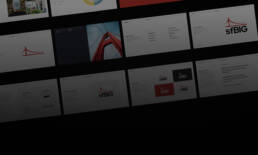Innovative strategies and tech
that will define brands in 2025.
Table of Contents.
As we approach 2025, the branding landscape is undergoing a significant transformation. From AI-powered personalization to gamification in brand engagement, companies are leveraging cutting-edge technologies and strategies to connect with audiences in unprecedented ways.
This article explores ten innovative trends that are set to revolutionize branding, offering insights into how businesses can stay ahead in an ever-evolving digital world. Whether you’re a tech professional, entrepreneur, marketer, or designer, understanding these trends is crucial for crafting compelling brand experiences that resonate in the future marketplace.
Introduction
In the fast-paced world of branding, staying ahead of the curve is not just an advantage—it’s a necessity. As we edge closer to 2025, the branding landscape is undergoing a seismic shift, driven by technological advancements and changing consumer behaviors. At Zamora Design, we’re at the forefront of these changes, constantly innovating to deliver cutting-edge branding solutions that resonate with modern audiences.
This article delves into ten groundbreaking trends that are set to redefine branding in 2025. From the integration of artificial intelligence to the gamification of brand experiences, we’ll explore how these innovations are reshaping the way brands connect with their audiences. Whether you’re a seasoned marketing professional or an entrepreneur looking to make your mark, understanding these trends is crucial for crafting a brand identity that stands out in an increasingly crowded digital landscape.
Let’s embark on this journey into the future of branding, where creativity meets technology, and imagination knows no bounds.
1. AI-Powered Personalization in Branding
How AI is Revolutionizing Brand Experiences
Artificial Intelligence (AI) is set to become the cornerstone of personalized branding strategies by 2025. Brands will leverage AI to analyze vast amounts of consumer data, creating highly tailored experiences for each customer. This level of personalization goes beyond simple product recommendations; it encompasses every touchpoint of the customer journey.
Imagine walking into a store and being greeted by name, with product suggestions based on your past purchases, current mood, and even the weather outside—all powered by AI. Online, websites will dynamically adjust their content, design, and messaging in real-time based on user behavior and preferences.
To implement this trend, businesses should invest in robust AI and machine learning capabilities. Start by collecting and analyzing customer data ethically, and use this information to create dynamic content that resonates with individual users. Remember, the goal is to make each customer feel like the brand speaks directly to them.
As Zamora Design has observed in our web design projects, integrating AI-powered personalization can significantly enhance user engagement and conversion rates.
2. Sustainability and Eco-Friendly Branding
Green is the New Black in Brand Identity
By 2025, sustainability will no longer be a nice-to-have feature but a core component of brand identity. Consumers will increasingly favor brands that demonstrate a genuine commitment to environmental responsibility. This trend goes beyond mere eco-friendly packaging; it encompasses the entire brand ethos and operations.
Brands will need to showcase their sustainability efforts transparently, from sourcing materials to production processes and distribution methods. We’ll see a rise in carbon-neutral and even carbon-negative brands, as companies strive to make a positive impact on the environment.
To embrace this trend, companies should conduct a thorough audit of their environmental impact and develop a comprehensive sustainability strategy. This could involve partnering with environmental organizations, investing in renewable energy, or developing innovative eco-friendly products.
In our branding projects, we’ve seen firsthand how a strong sustainability message can resonate with consumers and build brand loyalty.
3. Augmented Reality (AR) Experiences in Brand Interactions
Blending the Digital and Physical Worlds
Augmented Reality (AR) is set to transform brand interactions by 2025, creating immersive experiences that blur the line between the digital and physical worlds. Brands will use AR to offer unique, interactive experiences that engage consumers in novel ways.
Imagine pointing your smartphone at a product in a store and instantly seeing its origin story, sustainability credentials, and user reviews floating in the air around it. Or try on clothes virtually without stepping into a fitting room, complete with suggestions for accessories and outfit combinations.
To leverage this trend, invest in developing AR experiences that add genuine value to your customers. This could involve creating AR-enabled packaging, virtual try-on features for products, or interactive AR advertisements. The key is to use AR not just as a gimmick, but as a tool to enhance the customer’s understanding and experience of your brand.
At Zamora Design, we’re excited about integrating AR into our presentation design services, allowing brands to create truly immersive pitches and presentations.

AR-powered shopping experiences represents a significant shift in how brands engage with customers, offering personalized, interactive, and highly engaging product demonstrations that were once confined to science fiction.
4. Hyper-Local Branding Strategies
Think Global, Act Hyper-Local
While globalization continues, 2025 will see a countertrend towards hyper-local branding. Brands will tailor their messaging, products, and experiences to specific neighborhoods or even individual streets. This approach recognizes that even within cities, different areas have unique cultures, preferences, and needs.
For instance, a coffee chain might offer different blends and store designs for each neighborhood in a city, based on local tastes and demographics. A global fashion brand might create limited-edition collections inspired by and available only in specific localities.
To implement this trend, invest in granular market research and data analytics. Understand the unique characteristics of each micro-market you operate in. Consider creating local brand ambassadors or partnering with community influencers to create authentic, localized content.
In our strategic narrative development work, we’ve found that incorporating local elements can significantly strengthen a brand’s connection with its audience.
5. Voice-Activated Branding for Smart Devices
Speaking Your Brand’s Identity
As smart speakers and voice-activated devices become ubiquitous, voice will play a crucial role in branding by 2025. Brands will need to develop distinct voice identities, complete with unique wake words, voice tones, and conversational styles.
Imagine asking your smart home device to order your favorite coffee, and it responds in the brand’s signature voice, perhaps even engaging in a brief, personalized conversation about your day. Or picture voice-activated advertisements that respond to specific voice commands, offering a truly interactive experience.
To prepare for this trend, start developing your brand’s voice identity now. This goes beyond just choosing a voice actor; it involves crafting a conversational style that aligns with your brand values and resonates with your target audience. Consider partnering with voice AI experts to create a unique, patented voice for your brand.
At Zamora Design, we’re exploring ways to incorporate voice branding into our custom presentation templates, allowing brands to maintain consistency across all touchpoints.
6. Micro-Moment Marketing
Capturing Attention in Seconds
In 2025, the attention economy will reach new heights, making micro-moment marketing crucial for brands. This trend focuses on delivering highly relevant, bite-sized content at precisely the right time and place in a consumer’s journey.
Brands will need to identify and capitalize on these fleeting moments of consumer intent. For example, a travel company might send a personalized hotel recommendation the moment you land in a new city, or a recipe app could suggest dinner ideas based on the ingredients you just purchased.
To excel in micro-moment marketing, invest in real-time data analytics and predictive AI. Develop a content strategy that includes a variety of short-form content types, from quick videos to interactive infographics.
In our pitch deck design work, we’re increasingly focusing on creating impactful, easily digestible slides that convey key messages in seconds.
7. Inclusive and Diverse Brand Representations
Authenticity in Action
While diversity in branding isn’t new, 2025 will see a more nuanced and authentic approach to inclusivity. Brands will move beyond token representation to deeply integrate diverse perspectives into their core identity and operations.
This might involve collaborating with a wide range of creators from different backgrounds, using AI to ensure unbiased language in all communications, or developing products that cater to previously underserved communities.
To implement this trend, start by auditing your current brand representation across all touchpoints. Engage with diverse communities to understand their needs and perspectives. Consider creating a diversity and inclusion board to guide your branding decisions.
At Zamora Design, we believe that inclusive branding leads to more creative and effective strategic narratives, resonating with a broader audience.
8. Blockchain for Brand Authenticity and Transparency
Building Trust Through Technology
By 2025, blockchain technology will be a cornerstone of brand trust and transparency. Consumers will expect to trace the entire lifecycle of products, from sourcing of materials to delivery, all recorded immutably on the blockchain.
Luxury brands might use blockchain to prove the authenticity of their products, while food brands could use it to show the exact farm where ingredients were sourced. This technology will also revolutionize loyalty programs, allowing for more secure and flexible reward systems.
To leverage this trend, start exploring blockchain integration now. Consider partnering with blockchain experts to develop a transparent supply chain system. Use your branding strategy to highlight your commitment to transparency and build trust with consumers.
In our training and consulting services, we’re already helping clients understand and prepare for the impact of blockchain on branding and customer relationships.
9. Emotional AI in Brand Experiences
Understanding and Responding to Consumer Feelings
Emotional AI will take personalization to new heights in 2025. Brands will use advanced algorithms to detect and respond to consumers’ emotional states in real-time, creating highly empathetic brand experiences.
Imagine a smart billboard that changes its message based on the collective mood of passersby, or a customer service chatbot that adjusts its tone and responses based on the customer’s emotional state.
To prepare for this trend, start investing in emotional AI technology. Train your team in emotional intelligence and consider how your brand can respond empathetically to different emotional states. Develop guidelines for ethical use of emotional data to ensure consumer trust.
At Zamora Design, we’re exploring ways to incorporate emotional intelligence into our branding services, helping clients create more resonant and impactful brand experiences.
10. Gamification in Brand Engagement
Making Brand Interactions Fun and Rewarding
By 2025, gamification will be a key strategy for brands looking to increase engagement and loyalty. This trend involves applying game-design elements and game principles in non-game contexts to make brand interactions more enjoyable and rewarding.
Brands might create augmented reality scavenger hunts in stores, develop loyalty programs that feel like role-playing games, or use virtual currencies to reward customer engagement. The key is to make every interaction with the brand feel like a fun, rewarding experience.
To implement this trend, think creatively about how you can add game-like elements to your customer journey. This could involve creating challenges, leaderboards, or reward systems. Remember, the goal is to make engaging with your brand intrinsically motivating and enjoyable.
In our work with Canva, we’ve seen how gamification elements can significantly boost user engagement and brand loyalty.
Conclusion
As we stand on the brink of 2025, the world of branding is poised for a revolution. From AI-powered personalization to gamification in brand engagement, the trends we’ve explored offer exciting possibilities for brands to connect with consumers in meaningful and innovative ways.
The key to success in this new era of branding lies in embracing technology while maintaining a human touch. It’s about using AI and blockchain to build trust, leveraging AR and voice activation to create immersive experiences, and harnessing the power of data to deliver personalized, emotionally resonant content.
At the same time, brands must not lose sight of their core values and the importance of authenticity. The most successful brands of 2025 will be those that use these innovative technologies and strategies in service of genuine connections with their audience.
As we move forward, it’s crucial for brands to stay agile and open to change. The pace of innovation is only accelerating, and what seems cutting-edge today may be commonplace tomorrow. Continuous learning, experimentation, and adaptation will be essential for brands that want to thrive in this dynamic landscape.
At Zamora Design, we’re committed to staying at the forefront of these branding trends. Whether you’re looking to revamp your brand identity, create engaging presentations, or develop a strategic narrative for your company, we’re here to help you navigate the exciting future of branding.
The future of branding is bright, innovative, and full of possibilities. Are you ready to be a part of it?
Related Posts
September 15, 2024
From Band-Aid to Popsicle: 12 Brands That Became Household Names
Great design is all around you. In our daily lives, we interact with objects…
August 27, 2024
The Secret Lives of Objects: Hidden Design Stories in Everyday Product Designs
Great design is all around you. In our daily lives, we interact with objects…
April 30, 2024
sfBIG: A Non-Profit Website Re-Design & Branding Case Study
After successfully rebranding several non-profits, I was honored to be asked to…
March 22, 2024
Lessons From The Worst Rebrands in History
What were the worst rebrands in history? Let’s look at 7 lessons in bad…
Related Posts
September 15, 2024
From Band-Aid to Popsicle: 12 Brands That Became Household Names
Great design is all around you. In our daily lives, we interact with objects…
August 27, 2024
The Secret Lives of Objects: Hidden Design Stories in Everyday Product Designs
Great design is all around you. In our daily lives, we interact with objects…
April 30, 2024
sfBIG: A Non-Profit Website Re-Design & Branding Case Study
After successfully rebranding several non-profits, I was honored to be asked to…
March 22, 2024
Lessons From The Worst Rebrands in History
What were the worst rebrands in history? Let’s look at 7 lessons in bad…






